Crafting Characters for Children’s Picture Books: Common Mistakes to Avoid
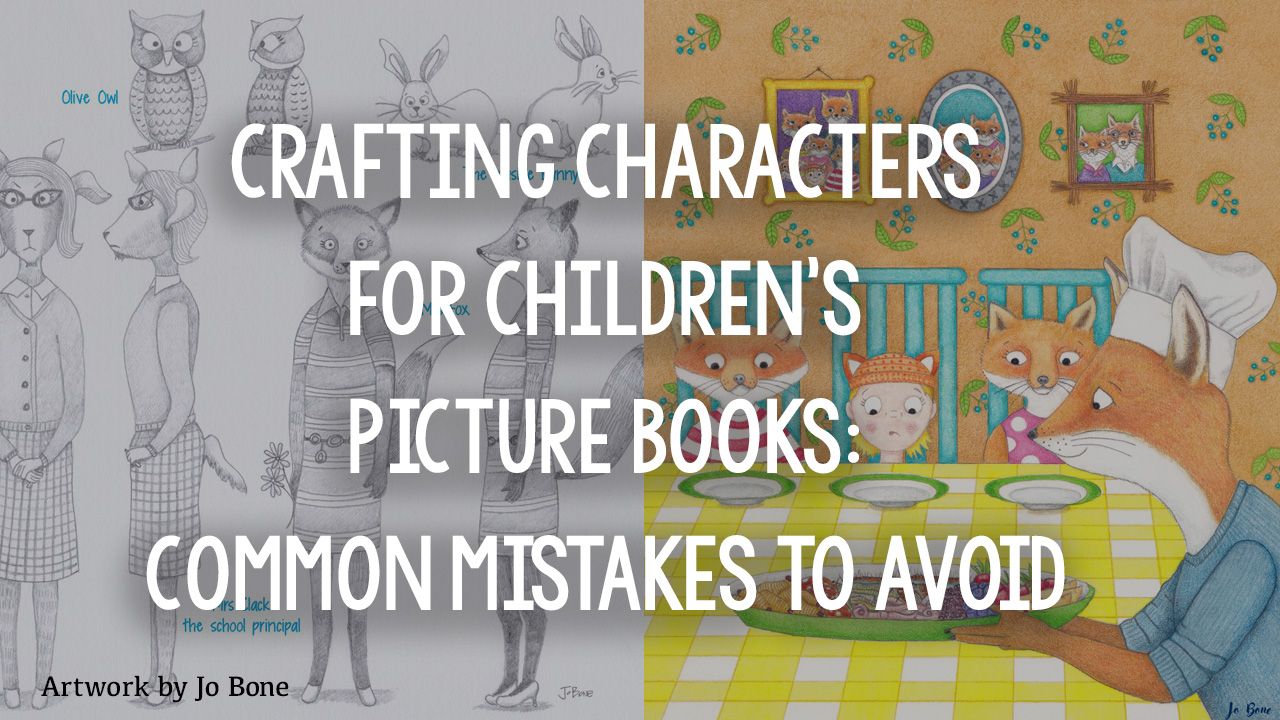
Creating memorable characters for children’s picture books is both an art and a science. Illustrators play a pivotal role in bringing stories to life by crafting characters that resonate with young readers. While the process requires creativity, it’s essential to be mindful of common mistakes that can detract from the characters and storytelling experience. In this blog, I’ll be showcasing some amazing artwork from my Picture Book Illustration e-Course students to spark your inspiration! Get ready for a ride through the do’s and don’ts in crafting characters for children’s picture books.
Neglecting Character Consistency
One of the most fundamental mistakes when illustrating characters is failing to maintain consistency throughout the book. Young readers rely on visual cues to recognize and connect with characters. Inconsistencies in a character’s appearance, such as changing eye color or clothing throughout the story, can confuse, distract, and disrupt the narrative flow.
Solution: Create a character reference sheet at the beginning of the project. Include details about the character’s appearance, such as their physical traits, clothing, and accessories. This sheet will serve as a reference guide to ensure consistent illustrations throughout the book.
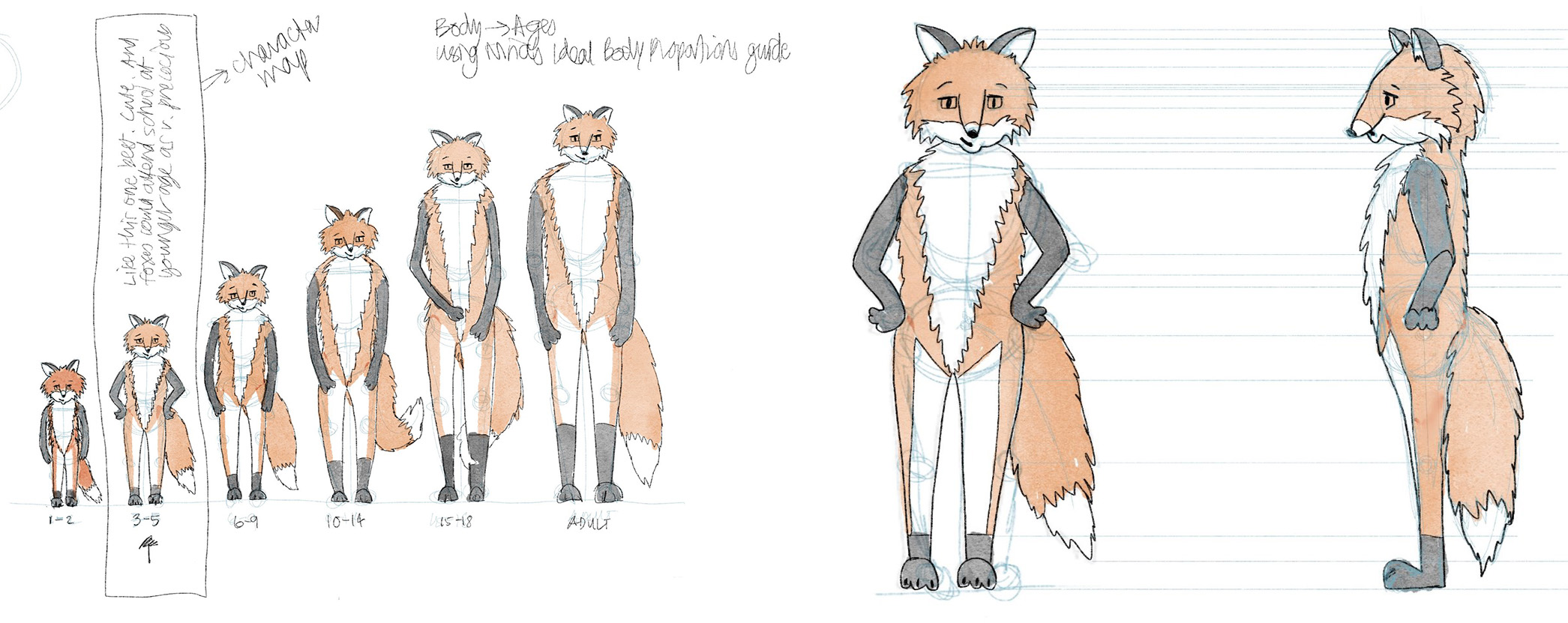
Above: Cher Hart’s Florence Fox character map, during the Picture Book Illustration e-Course, 2022
Overcomplicating Character Designs
While intricate character designs can be visually appealing, they can be overwhelming. Overly complex details can distract from the story’s focus and make it challenging for children to connect with the character.
Solution: Simplify character designs while retaining key distinctive features. Emphasize facial expressions and body language, allowing children to understand the character’s emotions and motivations easily.
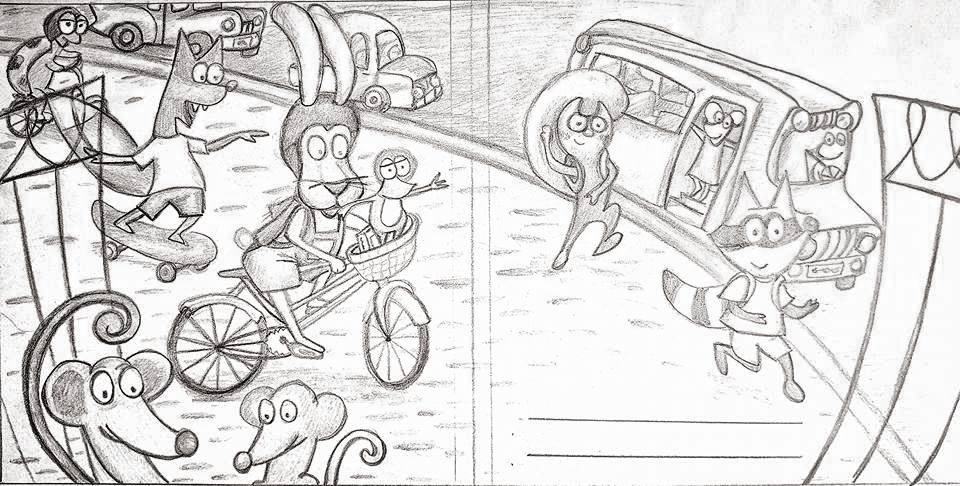
Amy Louise Calautti’s page layout from her ‘Florence Fox Goes to School’ storyboard, Picture Book Illustration e-Course, 2017
Stereotyping Characters
Illustrators must be mindful of stereotyping picture book characters. Assigning specific appearances or attributes based on stereotypes can reinforce biases and limit the diversity of characters in children’s literature.
Solution: Embrace diversity in character design by creating a wide range of characters from different backgrounds, ethnicities, and abilities. Avoid relying on clichés or superficial characteristics to define a character’s identity.
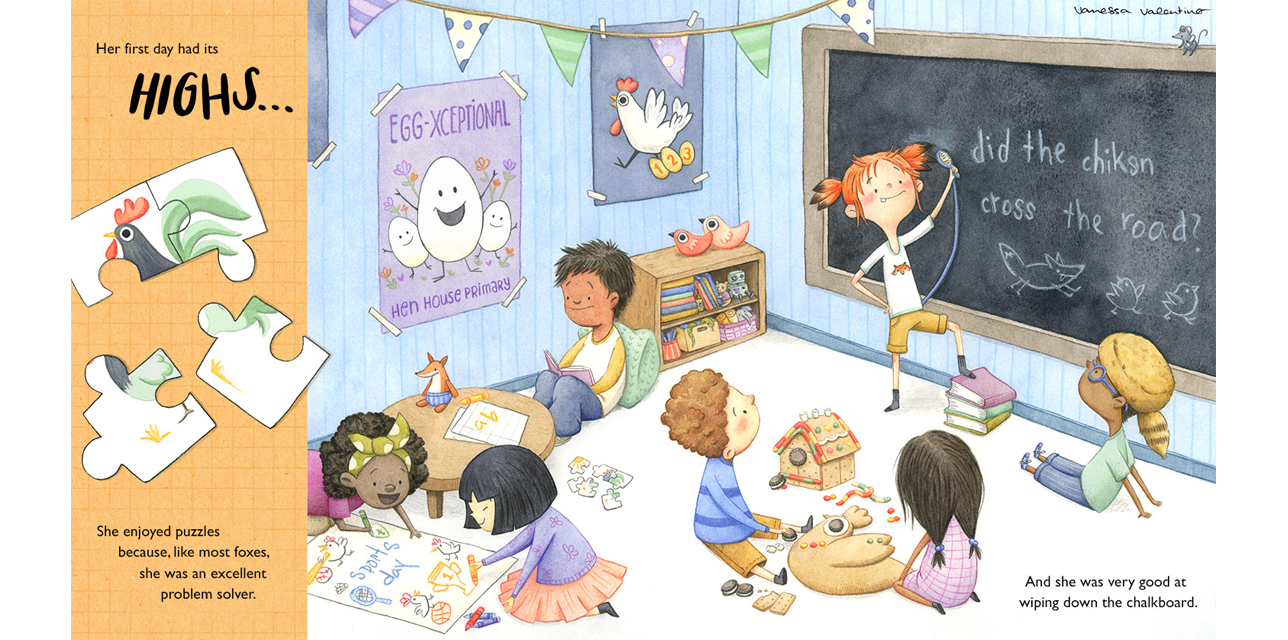
Vanessa Valentino’s final artwork for ‘Florence Fox Goes to School’, Picture Book Illustration e-Course, 2022
Ignoring Age-Appropriateness
Understanding the target age group is essential when illustrating characters for children’s picture books. Characters must be relatable to the intended audience. Ignoring age-appropriateness can lead to characters that feel either too simplistic or too mature for the readers.
Solution: Research the age group and adapt character designs accordingly. Create characters with traits and behaviors that resonate with the developmental stage and experiences of the children who will be reading the book.
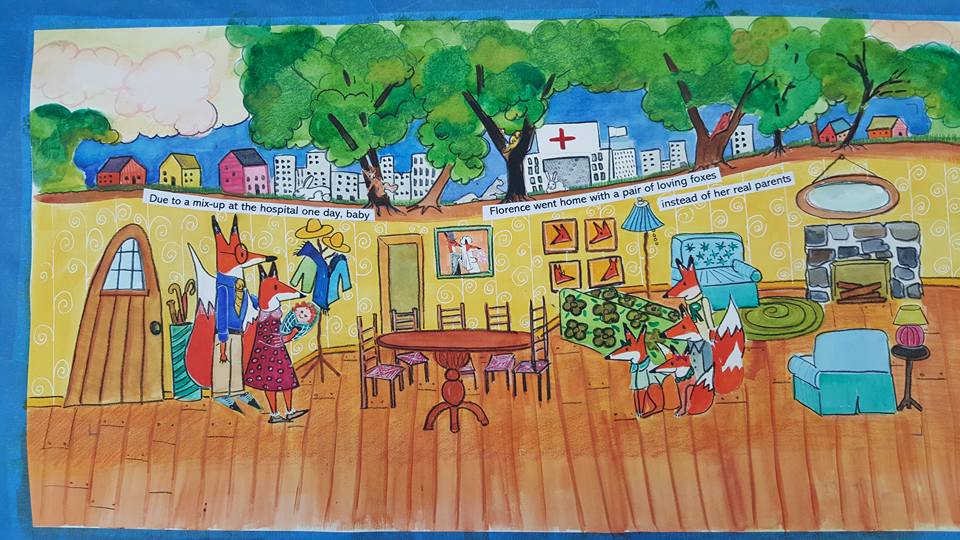
Barbara Moore’s final artwork for ‘Florence Fox Goes to School’, Picture Book Illustration e-Course, 2018
Neglecting Emotional Expression
Children’s picture books often revolve around emotional journeys and experiences. Neglecting to convey emotions through character illustrations can result in a less engaging reading experience. Characters should express a range of emotions that align with the story’s themes.
Solution: Pay close attention to facial expressions, body language, and posture. Ensure that characters convey emotions authentically, helping young readers connect with their feelings and experiences.

Sue Rinaldi’s final artwork for ‘Florence Fox Goes to School’, Picture Book Illustration e-Course, PBIC 2019
Underestimating the Importance of Character Movement
Character movement is a critical aspect of illustration in picture books. Neglecting to depict characters in motion can limit the visual storytelling potential. Illustrating characters that appear stiff, and lifeless can make the illustrations feel static and less engaging.
Solution: Show characters in motion when appropriate, reflecting the story’s dynamics. Action-packed scenes or even gentle interactions between two characters by showing characters in various poses will enhance the story’s visual narrative.
Neglecting the Environment
While the characters are central to the story, the world they inhabit plays a crucial role in engaging young readers. Neglecting the background and environment can leave the illustrations feeling incomplete and unconvincing.
Solution: Pay attention to the setting and environment that surround the characters. The background should complement the narrative and provide context for the characters’ actions. Adding the setting contributes to a more immersive reading experience.

Kerri Robertson’s page layout for her ‘Florence Fox Goes to School’, Picture Book Illustration e-Course, 2018
Overlooking Character Development
Illustrators often focus on a character’s initial design and forget about their development throughout the story. Neglecting character development can result in static characters that don't evolve or learn from their experiences.
Solution: Think about how the character’s appearance, expressions, and interactions change as the story progresses. Characters should grow and adapt in response to the events, revealing their depth and complexity.
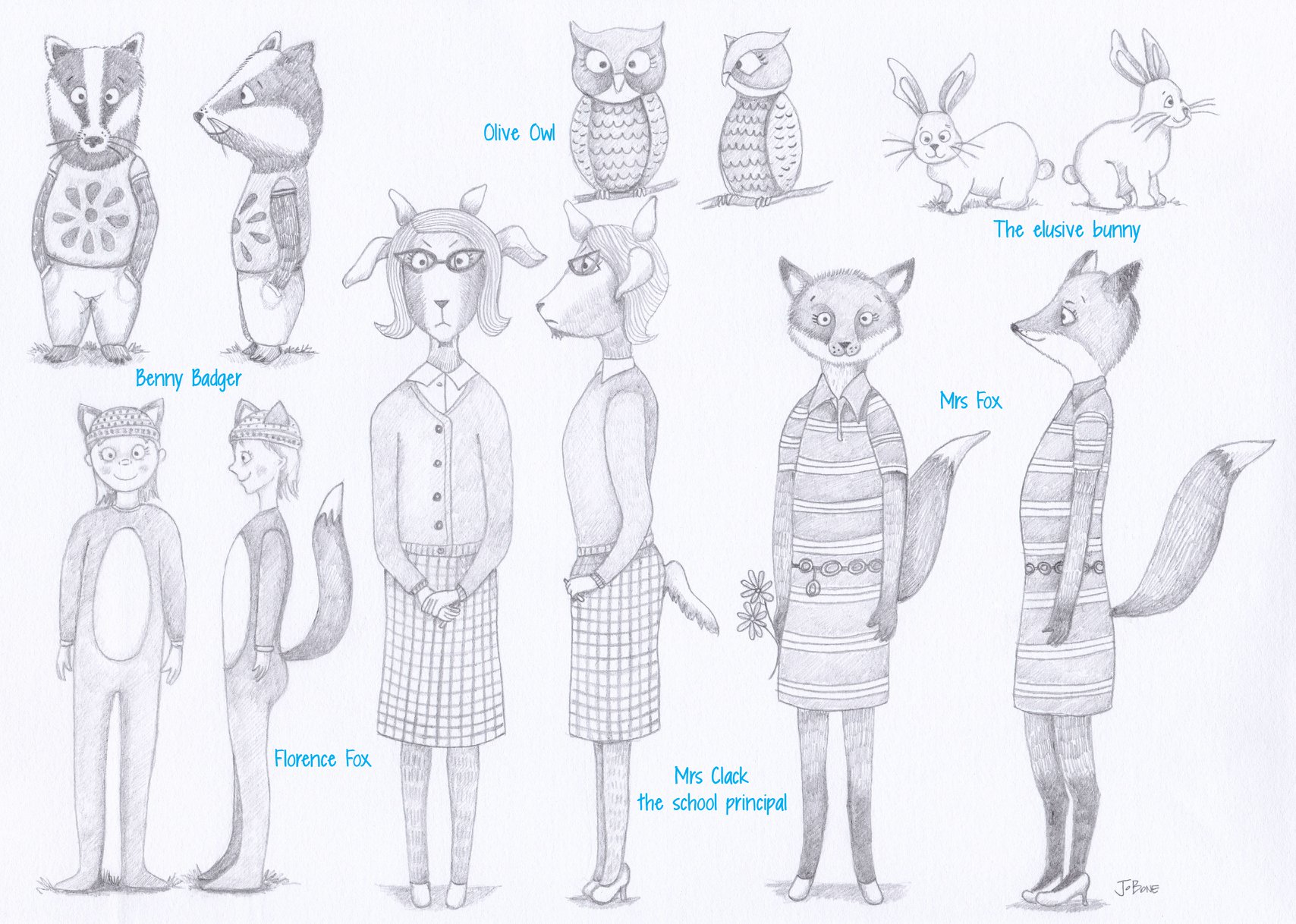
Jo Bone’s character designs for ‘Florence Fox Goes to School’, Picture Book Illustration e-Course, 2018
Disregarding Page Layout and Flow
The composition and arrangement of characters on the page are critical for the overall reading experience. Disregarding page layout and flow can lead to cluttered or disjointed illustrations.
Solution: Plan the layout carefully, considering how characters’ positions guide the reader’s eye through the page. Ensure that the character’s placement complements the text and enhances the visual narrative’s flow.

Elise Moore’s storyboard samples for ‘Florence Fox Goes to School’, Picture Book Illustration e-Course, 2017
Straying from the Story’s Essence
Lastly, it’s crucial to avoid straying from the essence of the story. Characters should serve the narrative and its themes. Overly embellishing or exaggerating character designs can divert attention from the story’s core message.
Solution: Continually refer back to the story’s themes and messages while illustrating characters. Character designs should amplify the story’s essence, ensuring that they align with the intended impact on young readers.
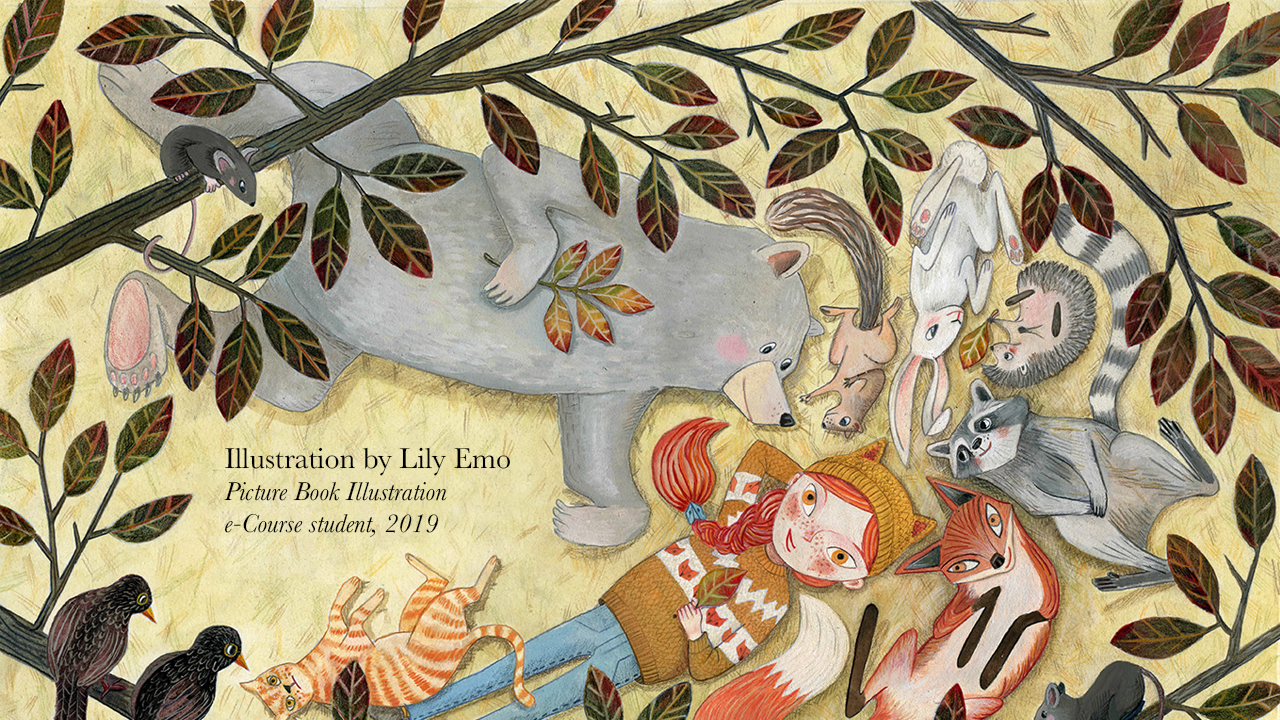
Lily Emo’s final artwork for ‘Florence Fox Goes to School’, Picture Book Illustration e-Course, 2018
Illustrating characters for children’s picture books is exciting, but it does take practice, persistence, and skill. Avoiding common mistakes is vital to ensure that your characters enhance the narrative. By prioritizing consistency, age-appropriateness, emotional expression, and character development, you can craft characters that leave a lasting impact.
As creators, we hold the power to introduce children to a world of imagination and wonder, all through the characters we bring to life on the pages of a picture book.
Wishing you endless inspiration,
Nina 🌟
PS – Join me on Instagram! I’ll meet you there. I’m so excited to get to know you!
The best place to dive right in is by visiting my website www.ninarycroft.com
PBIC Live: Join the waiting list for Nina’s 8-week Picture Book Illustration e-Course, commencing on February 2, 2024. By the end of the 8-week program, you will emerge with a well-rounded skillset, a community of like-minded illustrators, and the confidence to pursue a thriving career as a children’s picture book illustrator.
Join the Treehouse Membership Waitlist: If you know you have something special to offer the world of picture books and all you need is a supportive community and a guiding hand to help you bring your vision to life, make sure to join my Treehouse Membership waiting list. Doors will open again on April 1, 2024.



